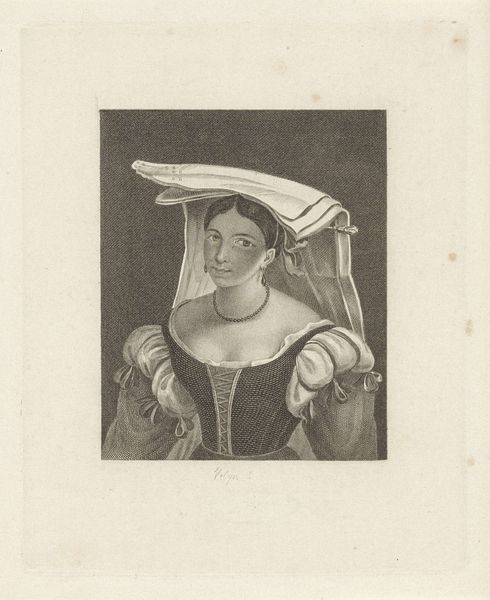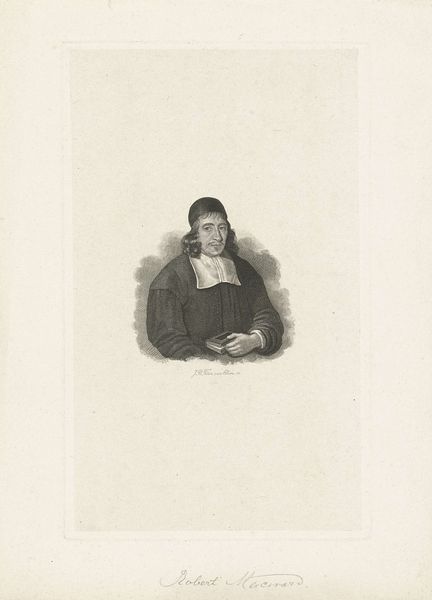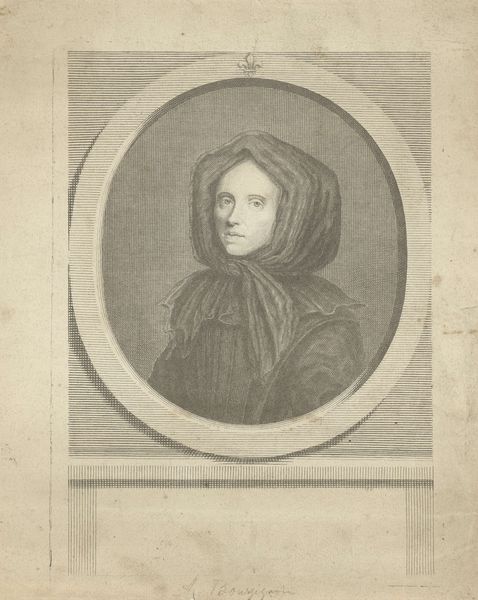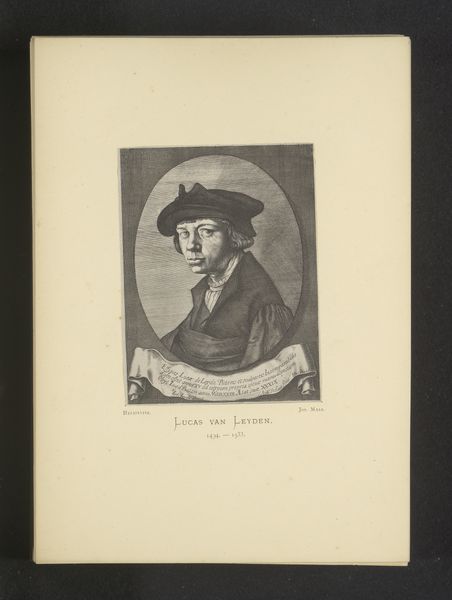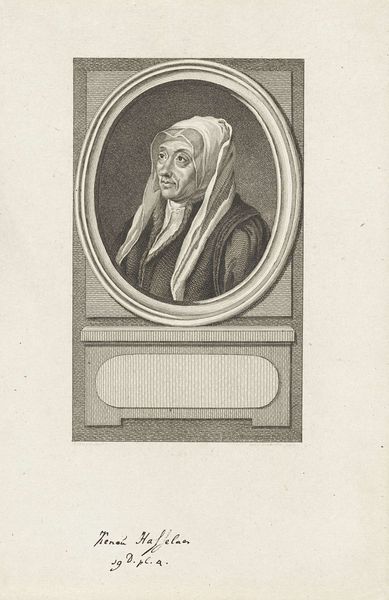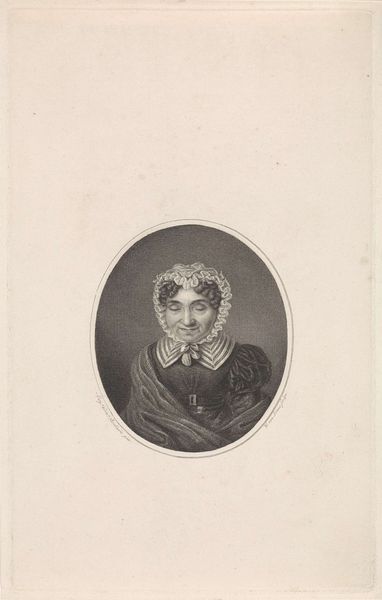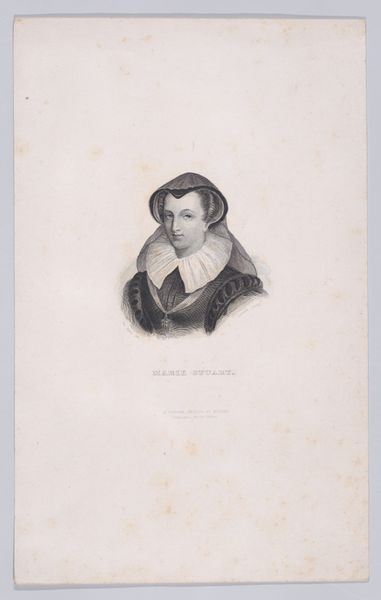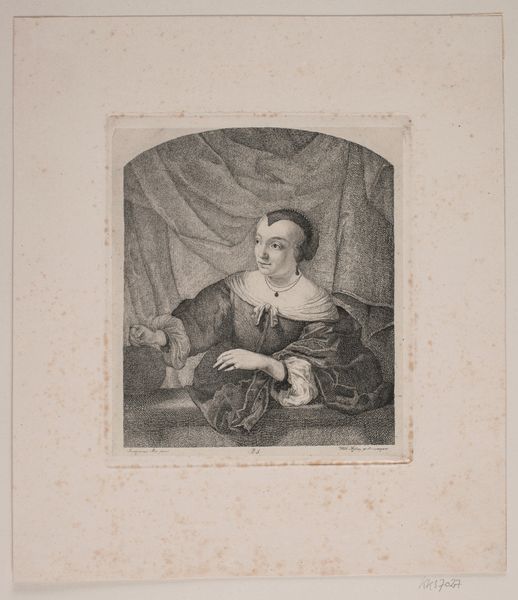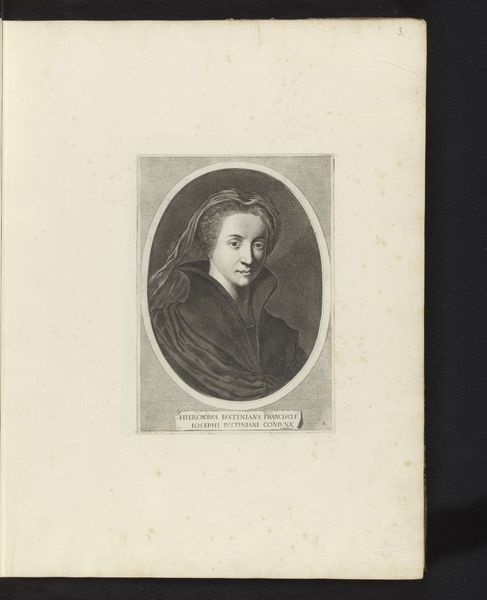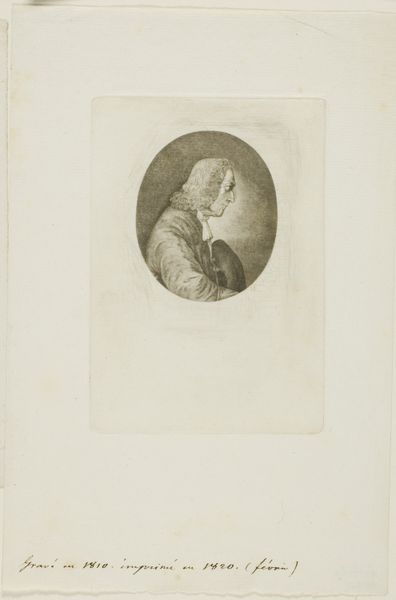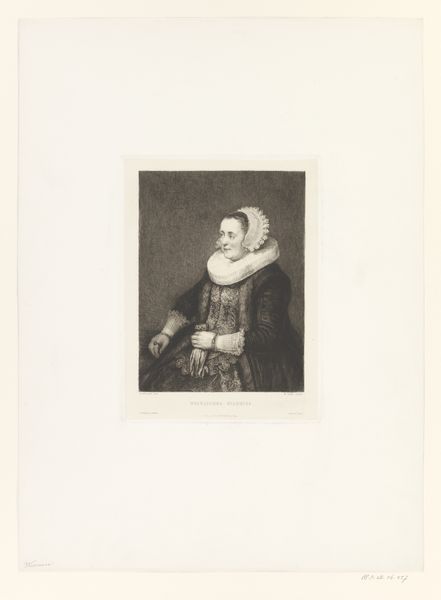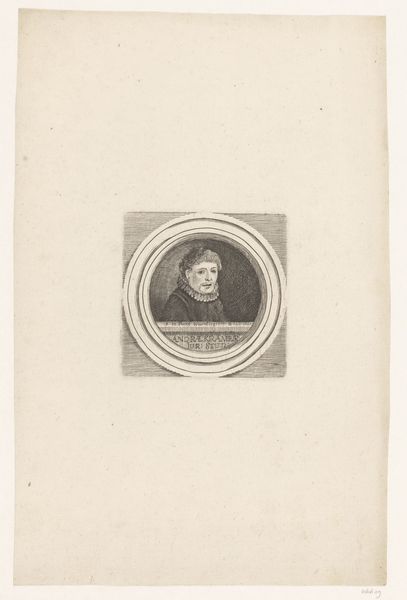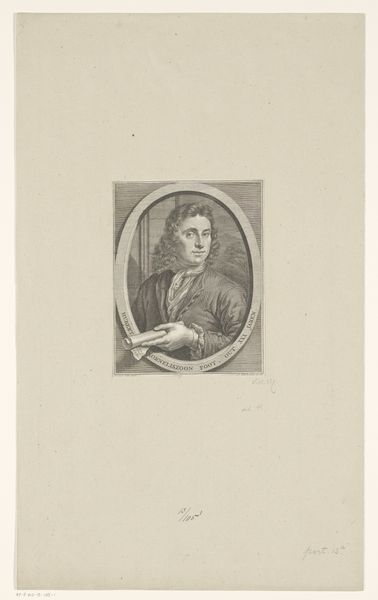
Dimensions: height 120 mm, width 96 mm
Copyright: Rijks Museum: Open Domain
Curator: Here we have Carel Jacob de Huyser's "Portret van Louise de Coligny," an engraving likely made between 1763 and 1804. What strikes you about it? Editor: There’s a stark elegance. All those carefully etched lines suggest the weight of formality, yet her gaze feels strangely personal, almost vulnerable. It makes you wonder about the life held within that elaborate attire. Curator: Exactly. Huyser's skill in rendering the textures—the lace, the folds of her dress— speaks to a detailed observation of materials. But, more than that, consider the process of engraving. Each line is a deliberate mark, a kind of labor-intensive dance between the artist and the copperplate. Editor: It’s funny you mention labor because that ruffled collar? You just *know* someone spent hours on it, stitching, starching… a real symbol of domestic craft intertwined with high status. I also note the oval frame that both displays and imprisons her within its border, reflecting the social constraints she might have faced. Curator: And yet, Huyser, through the realism he achieves with these minute lines, manages to capture something timeless about her spirit. Look at the subtle shading around her eyes—there’s a depth there that transcends the era. It suggests resilience, perhaps wisdom gained through navigating those very constraints you mentioned. It hints at so much more, doesn't it? Editor: It does. You know, thinking about this print as a mass-produced object rather than a one-of-a-kind portrait reframes it entirely. These engravings spread images, ideas, and, dare I say, a bit of aspirational envy throughout society. Whose likeness ends up etched in permanence becomes an explicit measure of the structures and politics in play. Curator: Indeed. This portrait isn't just a visual record; it's a commentary on status, skill, and the power of image dissemination in that era. Considering both the artistry and the mechanics of its making really brings it to life, don't you think? Editor: Absolutely. Peeling back those layers of craft and societal context adds so much richness, giving what seems like a straightforward portrait so many new stories to share.
Comments
No comments
Be the first to comment and join the conversation on the ultimate creative platform.
